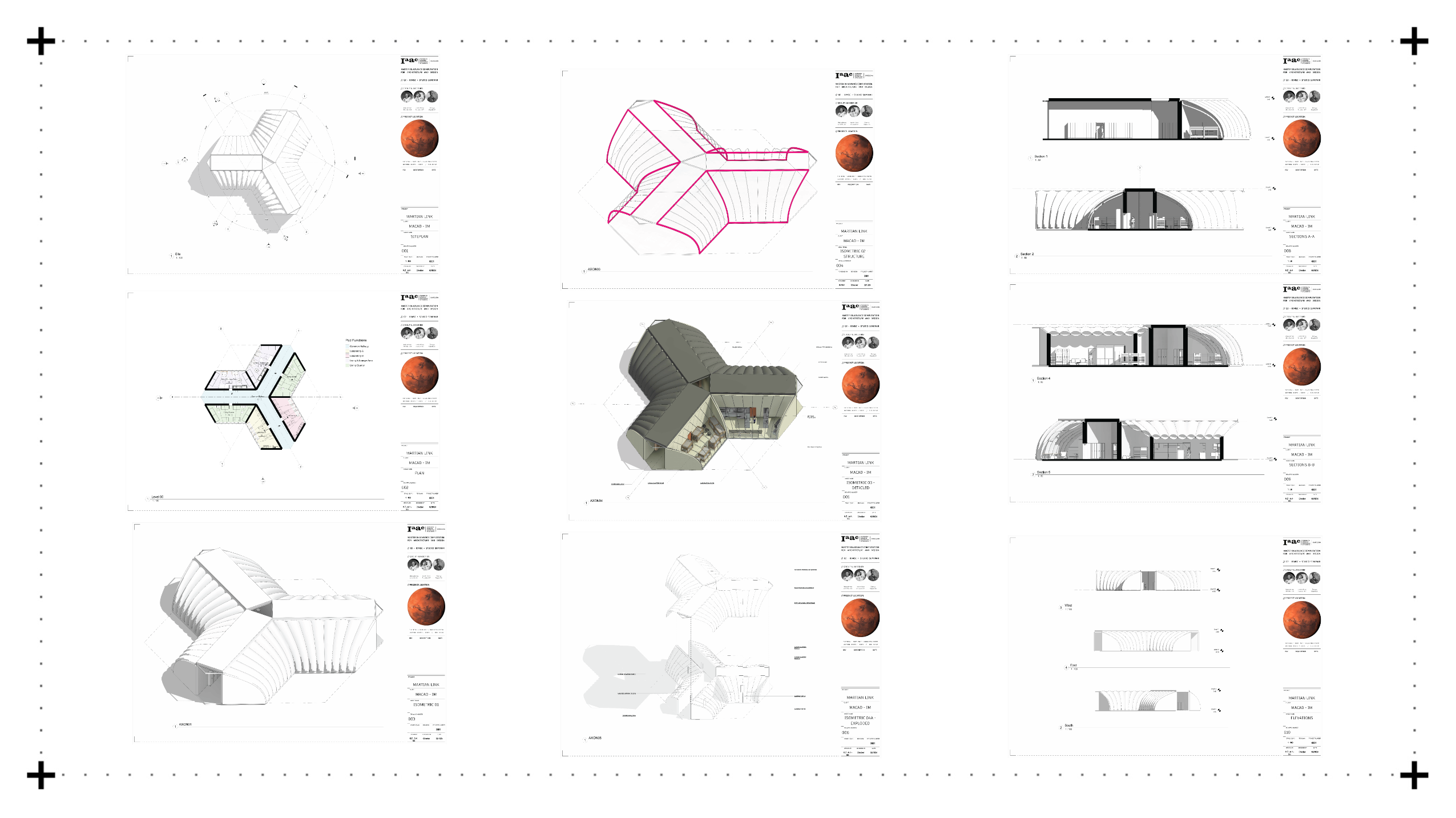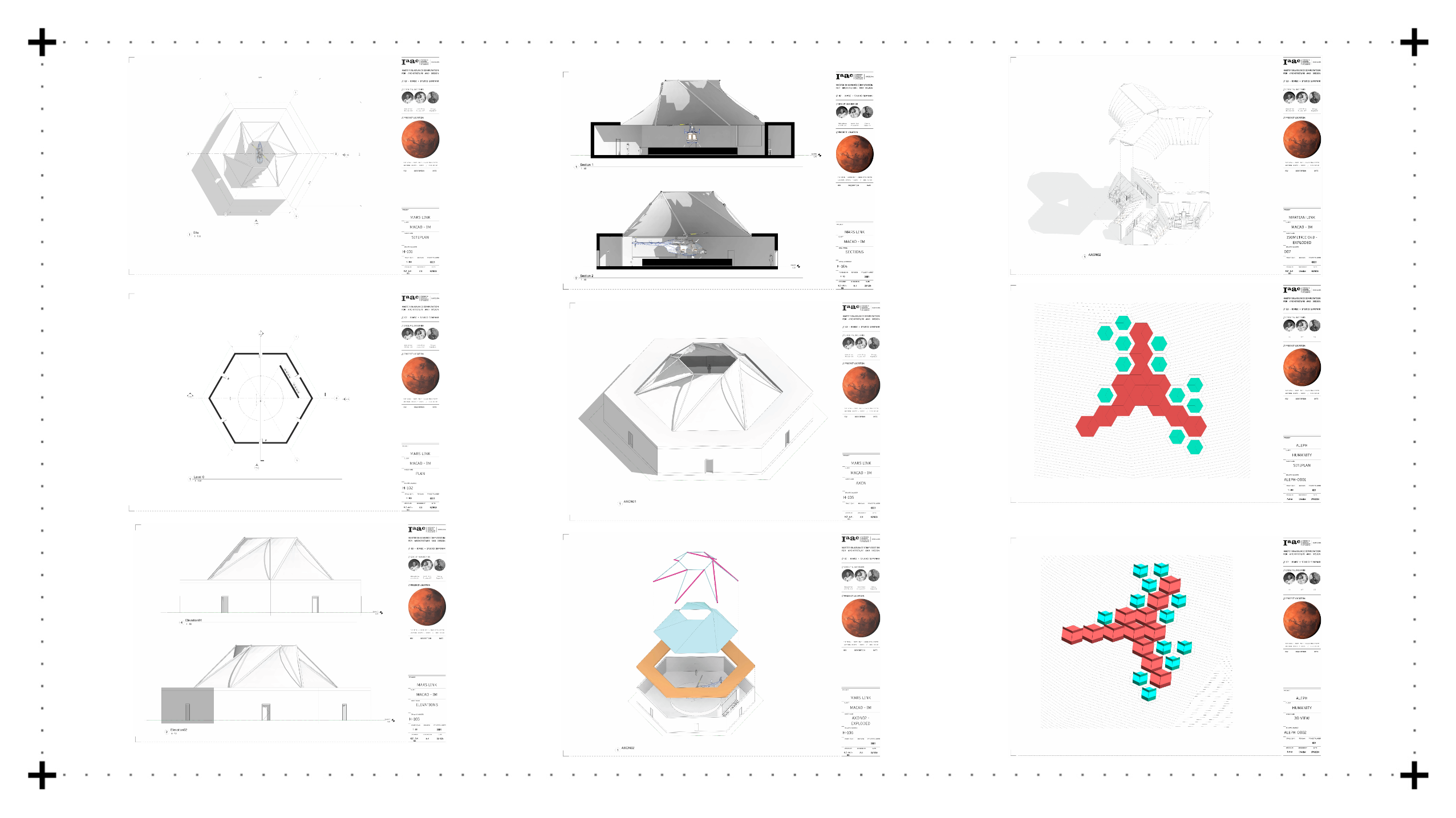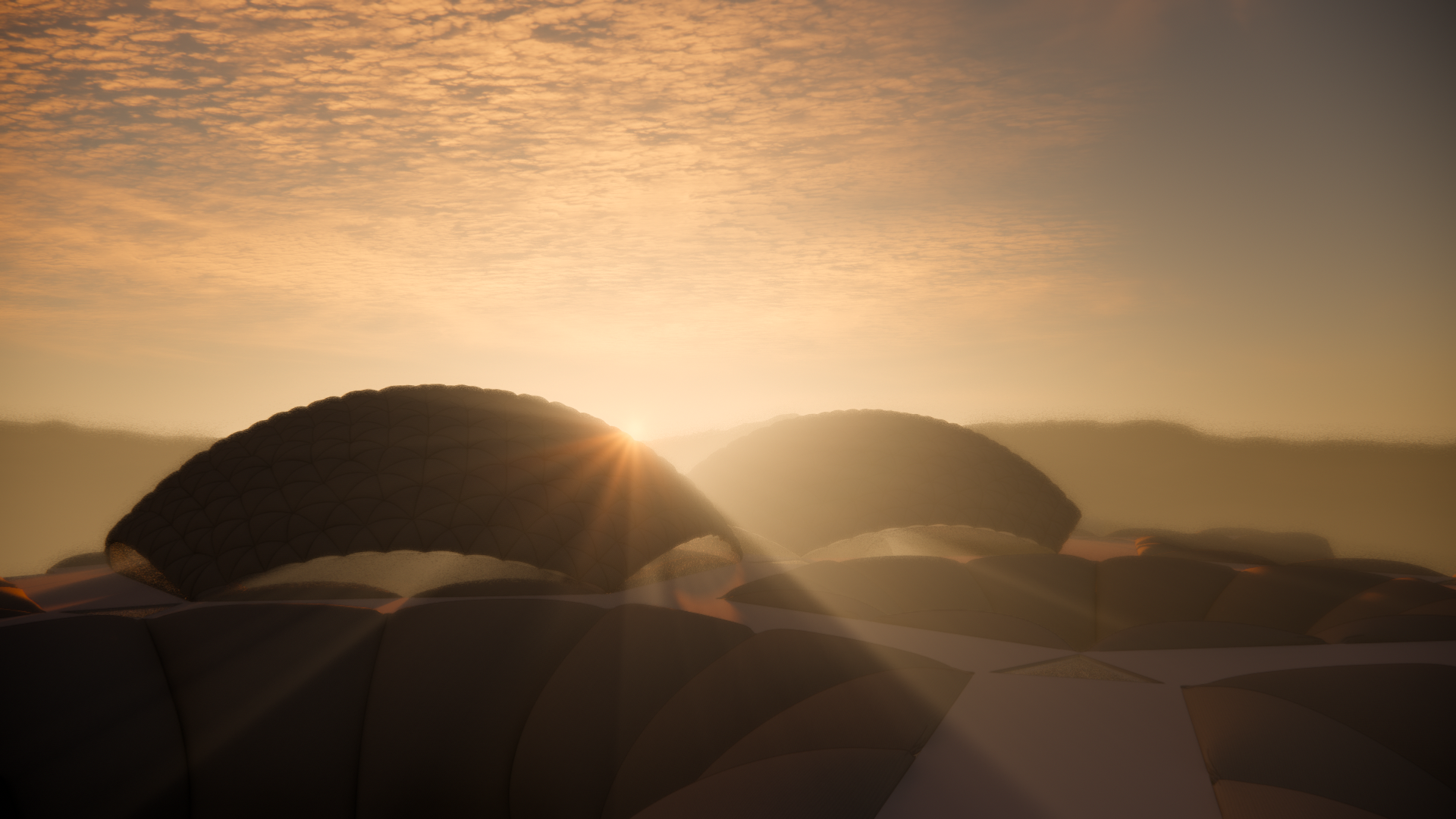Envisioning a self-sustained colony on Mars, our primary focus is on revolutionizing transportation within the red planet. Sustainability is our guiding principle as we design an efficient transportation system that seamlessly connects habitats across various clusters. Incorporating Tensegrity moving parts, Inflatable lightweight structures, and a Hexagonal Grid framework, our approach embraces a Kit-Of-Part methodology. Following this repeatable hexagonal pattern, all design elements can be easily connected with each other like a puzzle – in every possible direction – creating a seamless enclosed network for living and exploring a new habitation prototype on Mars.
Our transportation infrastructure relies on tensegrity moving parts for lightweight and durable launching pads, ensuring safe landings in Martian environments. Inflatable lightweight modules offer structural integrity and modularity, while the hexagonal grid optimizes space utilization and connectivity across the Martian surface. This adaptable framework accommodates diverse functions within each module, enhancing versatility within the colony. By prioritizing modularity and scalability, our hexagonal grid system facilitates rapid assembly, reconfiguration, and infinite expansion. Standardized components and interfaces ensure resilience to evolving needs and environmental conditions on Mars, fostering community and collaboration among colonists. This approach harmonizes with the Martian environment, minimizing terraforming while maximizing efficiency and connectivity. Our system integrates transportation hubs mirroring those found on Earth, facilitating seamless mobility and resource distribution within the colony. Additionally, our efficient transport system, including capsule-based devices for goods and human transit, further enhances connectivity and resource distribution across the Martian landscape. In summary, our approach aims to establish a sustainable Martian colony while minimizing ecological impact and maximizing efficiency in transport and infrastructure.
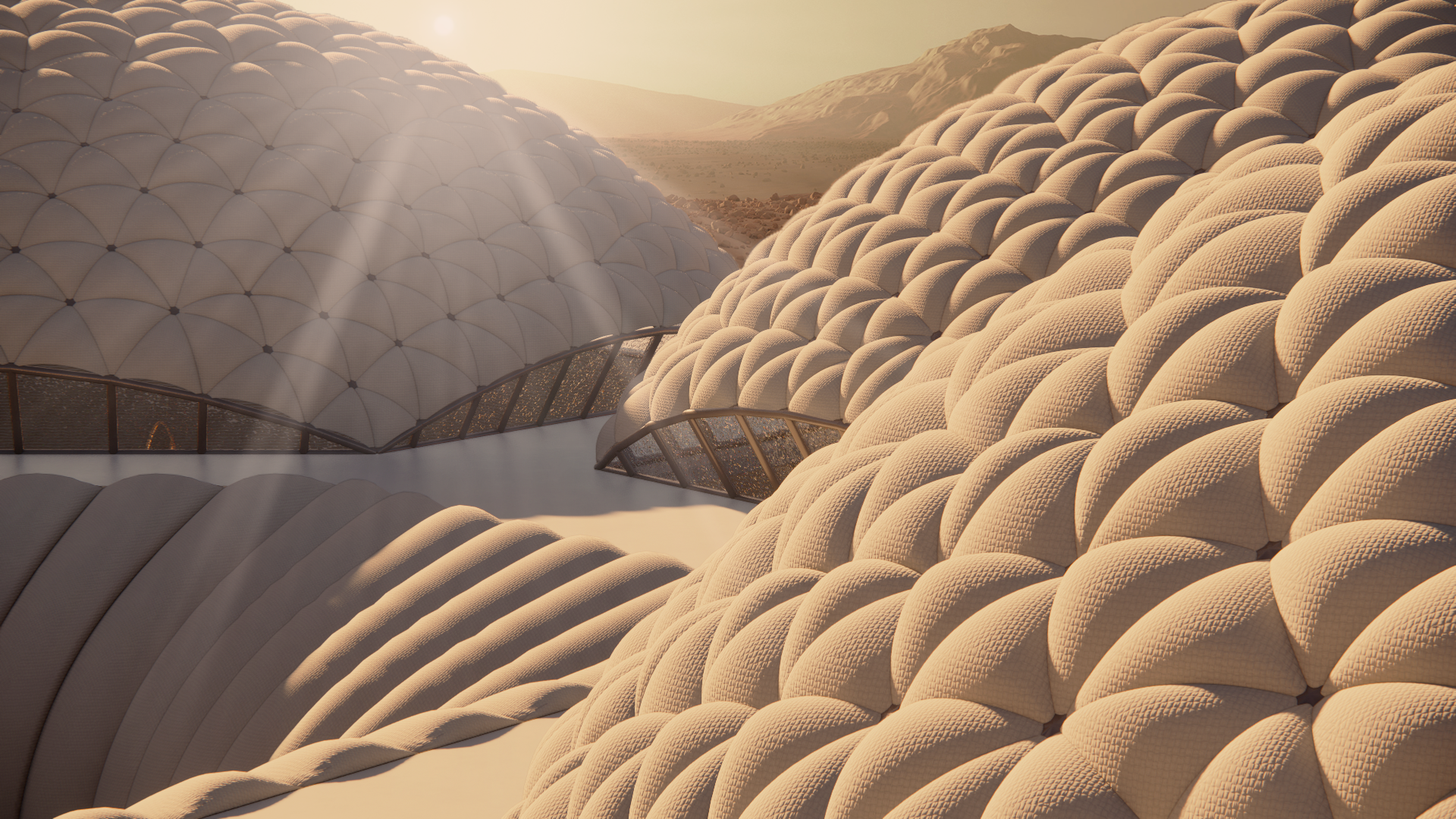
_Project Vision

_Design Brief
Our project embraces the concept of a ‘kit of parts’, featuring two distinct cluster types: Residential and Transport Hub. Each cluster comprises three essential design elements – Helipad, Inflatable Dome, and Residential Pod – strategically distributed based on their designated functions following the hexagonal grid framework. Utilizing this grid system with replicated forms, we can customize hexagon types to suit specific functions and evolving needs within our Martian settlement.
_Kit of Parts
- Residential Pod (Modular System)
- Transportation Hub (Inflatable System)
- Helipad Landing Infrastructure (Tensegrity System)

_Residential Pod
Our Hexagon Residential Unit comprises of 6 Pods designed based on the Hexagonal Grid system. From comfortable living quarters to lounge spaces, and laboratories, each pod has been detailed out with human ergonomics and furniture. Anchored by a sturdy rigid cable structure, our design ensures stability and resilience in the Martian environment. Wrapped around this framework is a lightweight skin material engineered for both protection and habitability. Comprising six layers of defense – including double membrane, PTFE layering, and vacuum spacing. With an outer shell-inner shell configuration and reinforced aluminum structure framing, our design effectively shields against radiation while maintaining structural integrity, with a thickness of 0.5-meter thickness. For the construction process, we’ve devised an efficient assembly method leveraging robotics and pre-made, flat-packed elements transported from Earth and assembled on the surface of Mars. This approach streamlines construction while minimizing the need for extensive manual labor in the challenging Martian environment. Upon arrival, rovers land on Mars to initiate groundwork for the colony’s establishment, locating optimal coordinates and marking designated areas for construction. Essential energy sources and infrastructure are swiftly established to sustain colony operations. Local regolith is utilized for 3D printing structural components, while inflatable structures are strategically installed to enhance habitability and functionality within the colony.


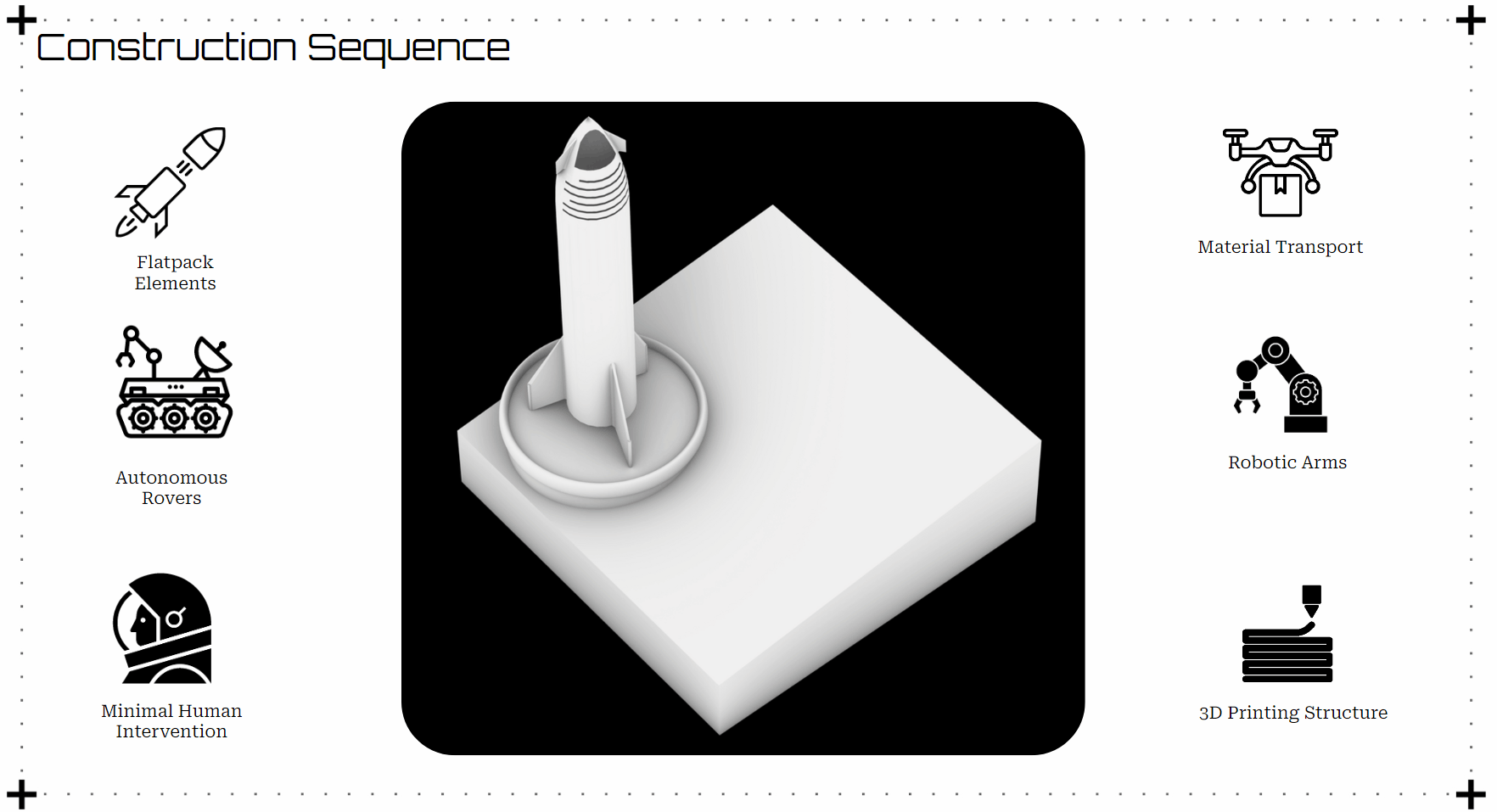
Robots play a pivotal role in the assembly process, autonomously executing tasks with precision and speed. Equipped with advanced programming and sensing capabilities, these robots navigate the Martian terrain and coordinate assembly operations with minimal human intervention. From erecting tensegrity structures to deploying inflatable modules, robots ensure the accuracy and efficiency of each construction phase. Key to our approach is the use of pre-made, flat-packed elements transported from Earth. These elements, designed to be lightweight and compact for space travel, include structural components, inflatable modules, and essential infrastructure pieces. By pre-fabricating these elements on Earth and packaging them in a flat-packed format, we optimize space utilization during transit and simplify logistics upon arrival on Mars.
Once on the Martian surface, assembly crews guided by robotic systems unpack and assemble these pre-made elements according to predefined plans and specifications. Modular construction techniques and standardized interfaces facilitate seamless integration, allowing for rapid deployment of transportation infrastructure, habitats, and support facilities across the colony.

DOCUMENTATION
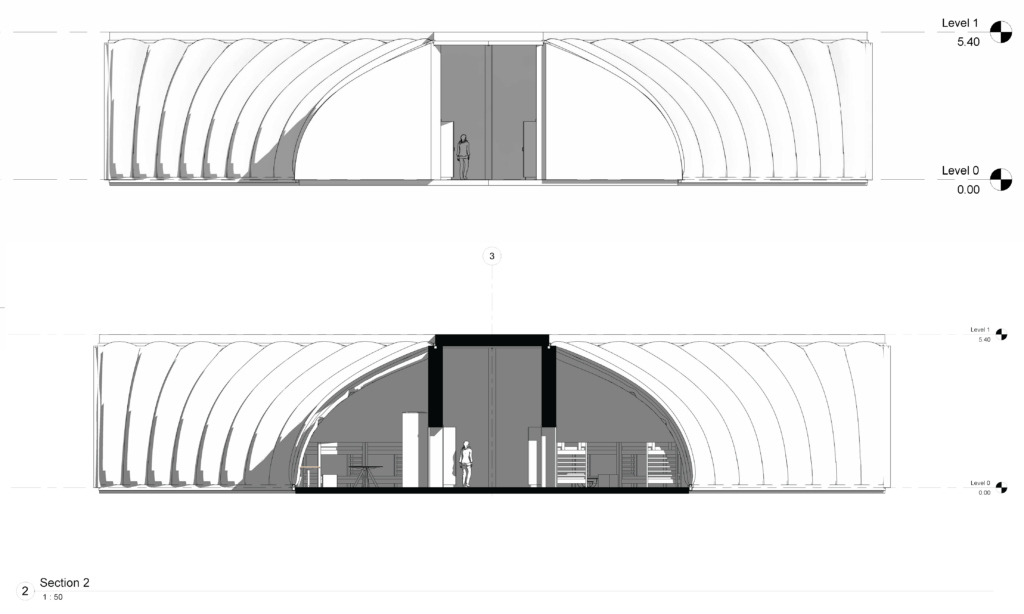

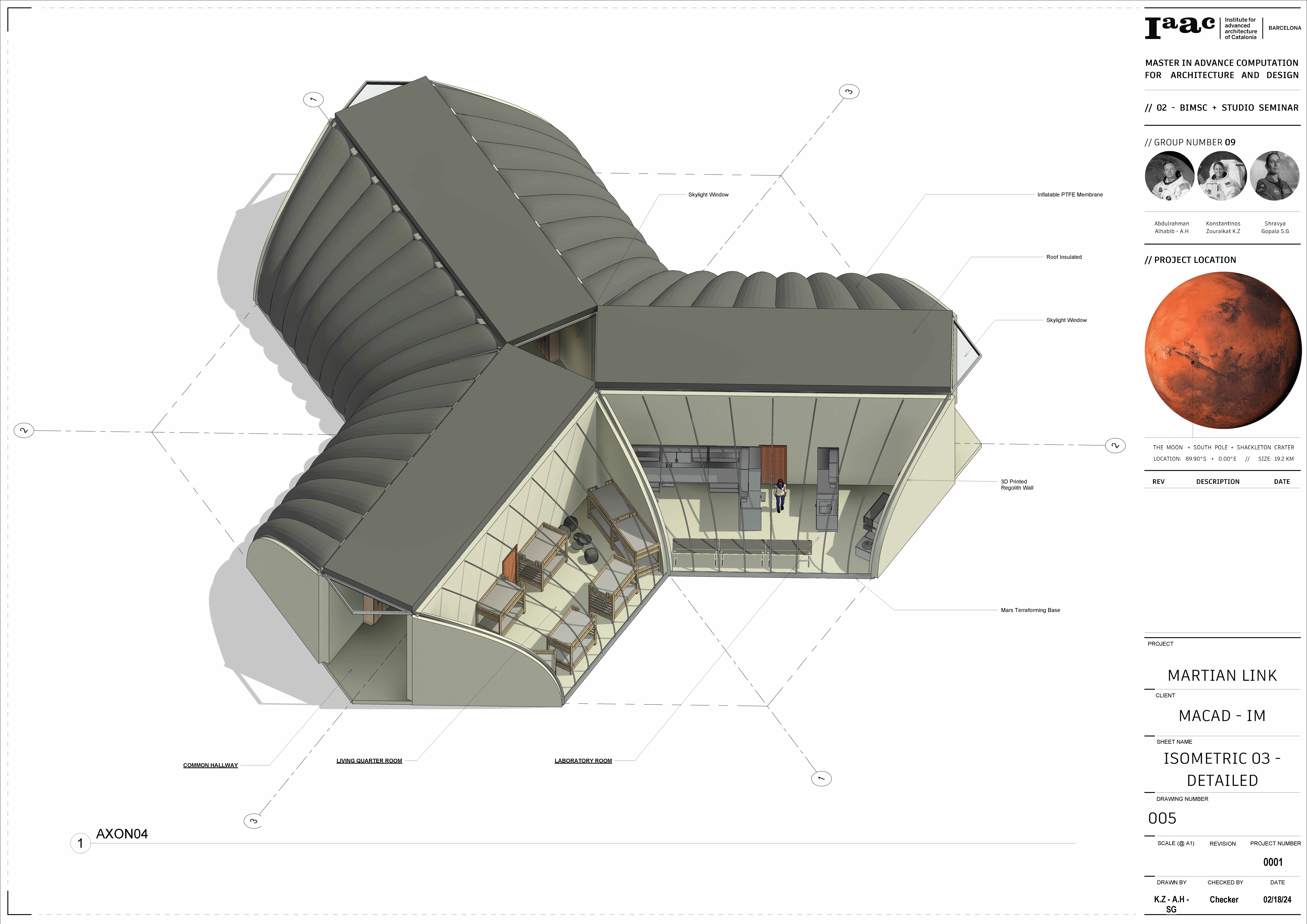
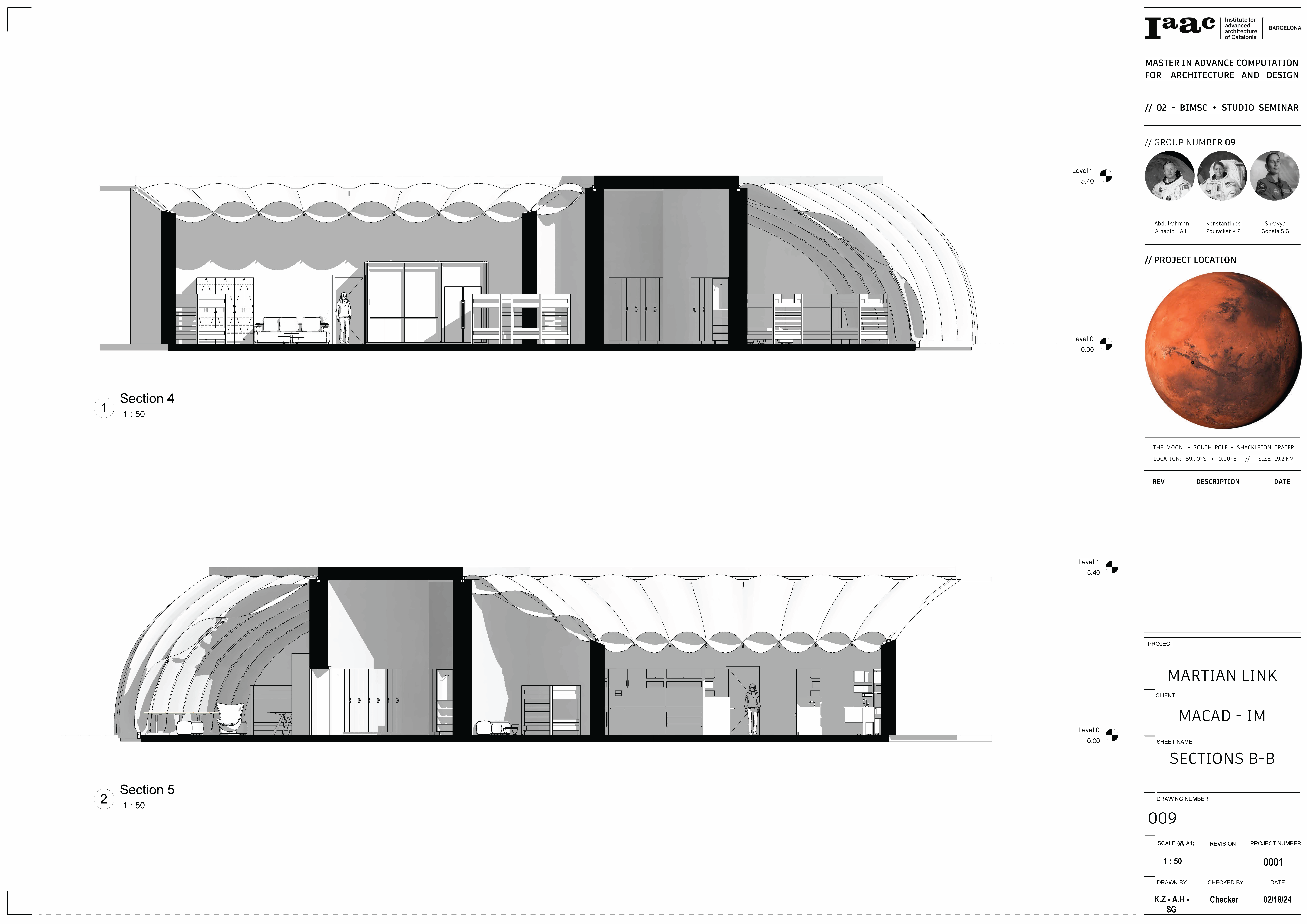
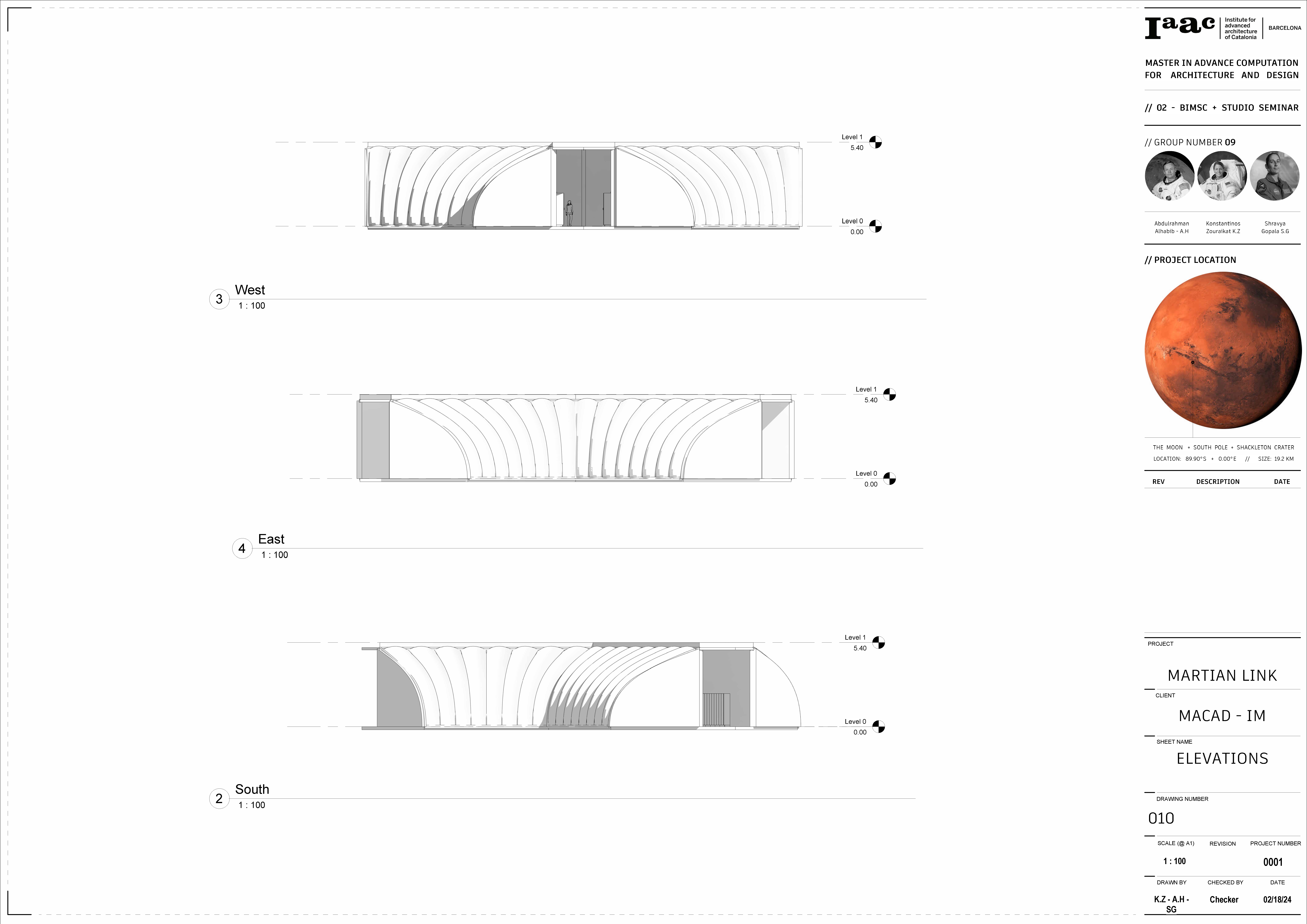
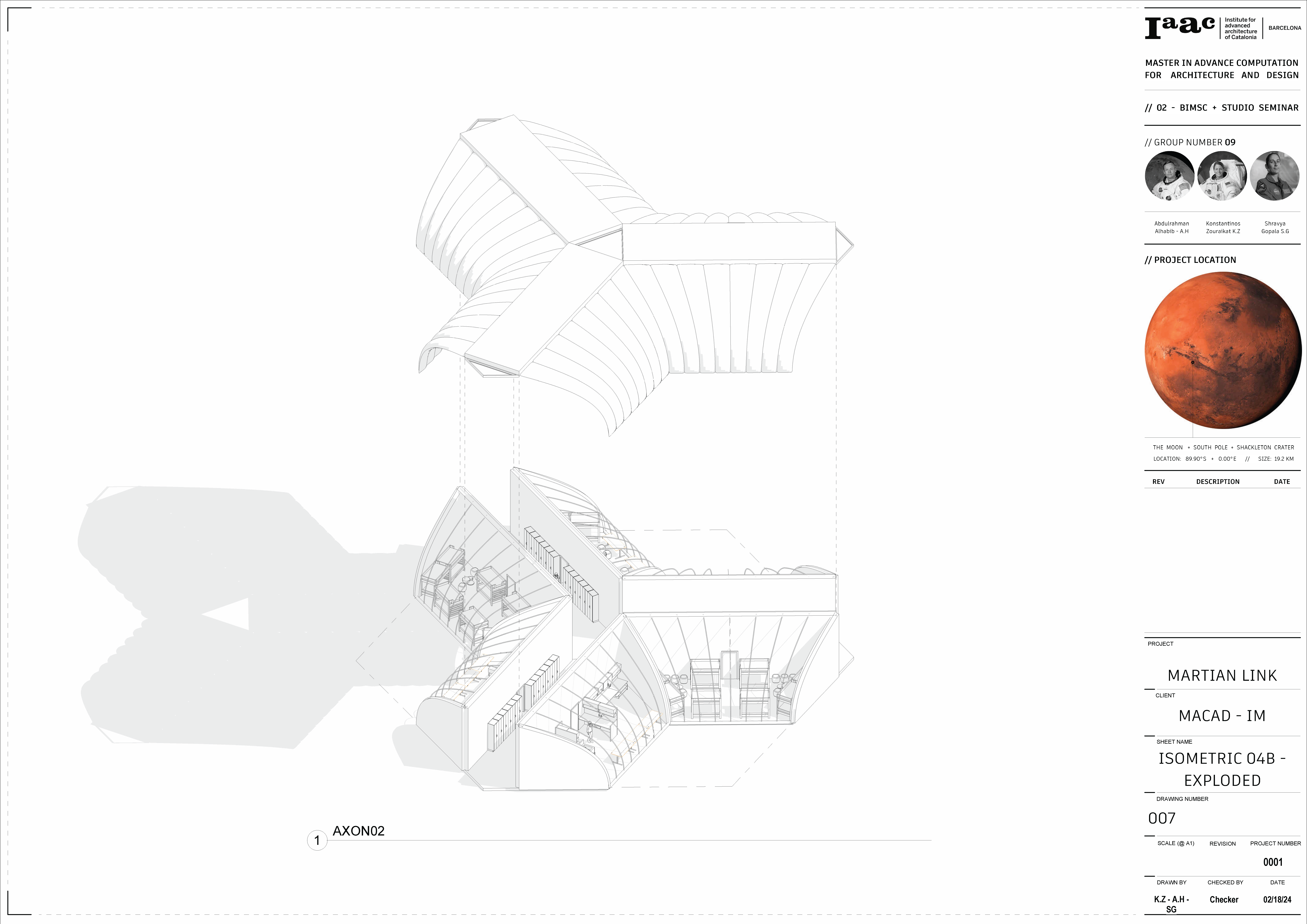

_Transportation Hub
Located at the heart of our Martian settlement, the transportation hub serves as a vital nexus, seamlessly connecting neighboring clusters, and acting as the living heart of the colony. Comprising of launching pads, airlock systems, transit facilities, a public plaza, and research labs, this central node facilitates movement and interaction among colonists. The hub’s design optimizes functionality, with launching pads situated on the periphery and central domes housing key functions such as the plaza, transit facilities, and research labs. Movement within the hub begins with transit services, progressing from ticketing areas to terminals, culminating at the research launching pads. Peripheral landing zones offer parking and service stations, minimizing human intervention on the Martian surface. The hub’s infrastructure integrates terraforming bases, 3D-printed walls, and structural members supporting the inflated domes, ensuring stability and durability in the harsh Martian environment. Launching pads feature tensegrity moving parts and pneumatic membrane coverings, while the central domes utilize a triangular steel structural framework to support inflatable membranes, providing both functionality and protection.
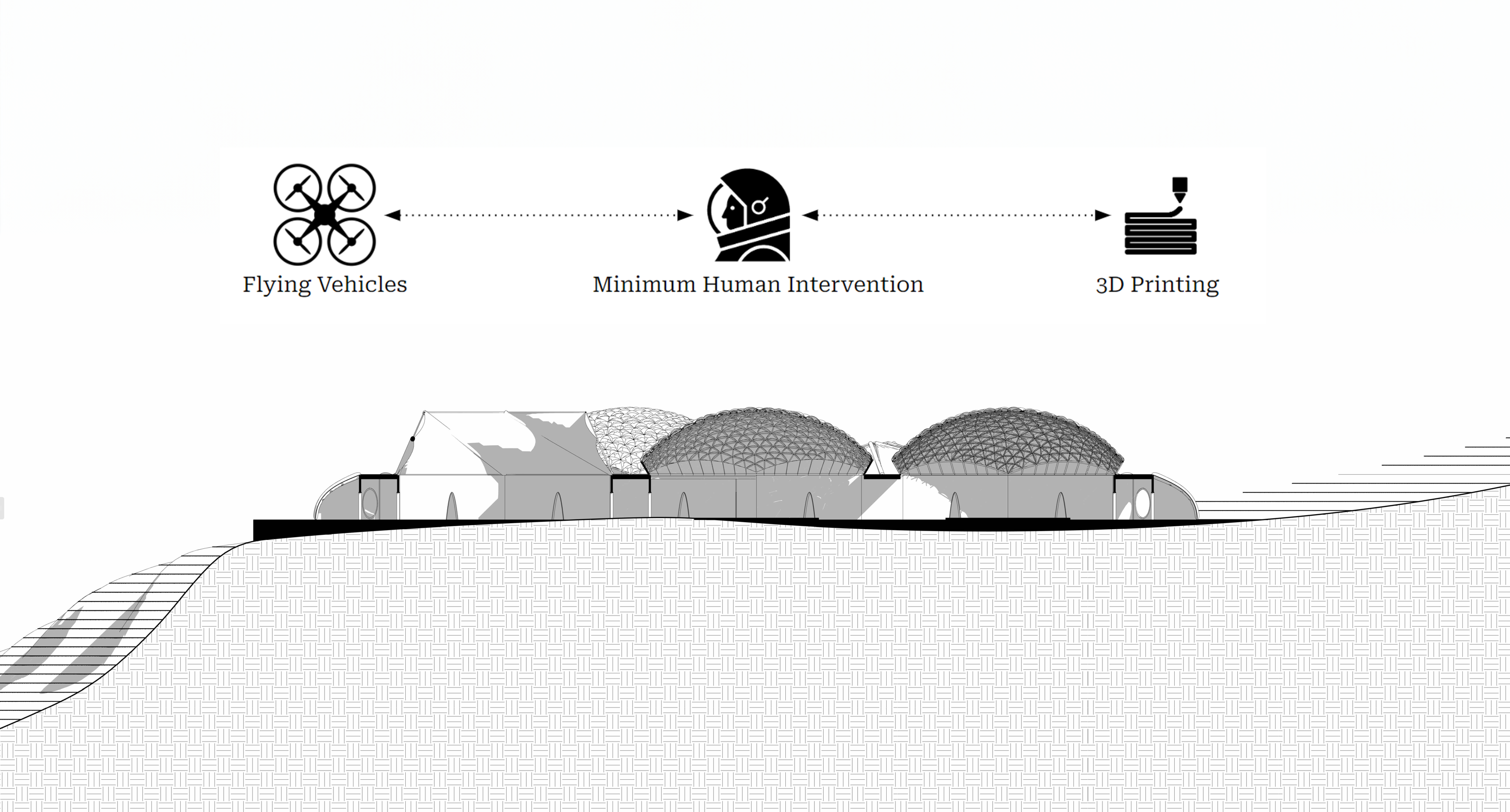

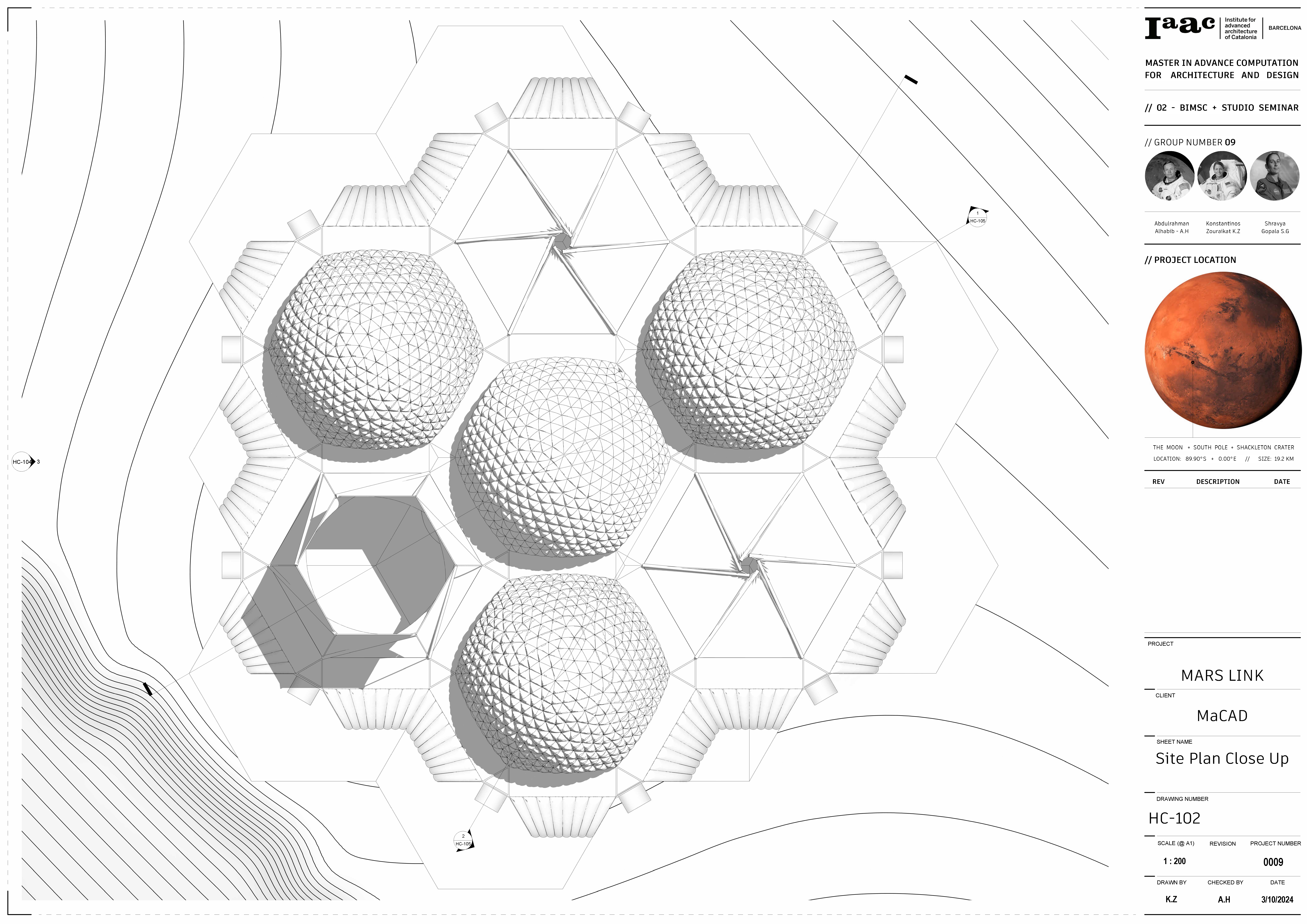
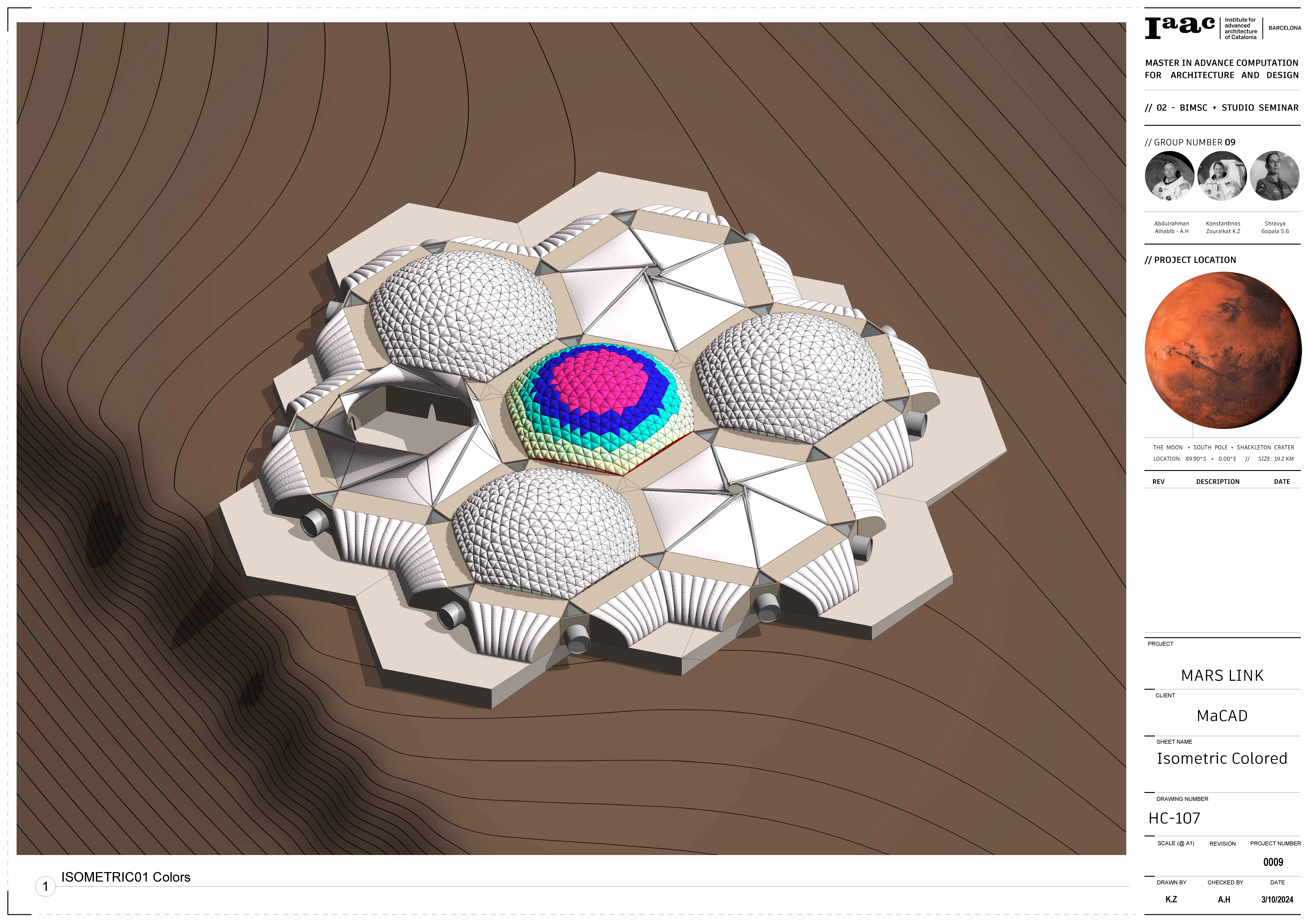

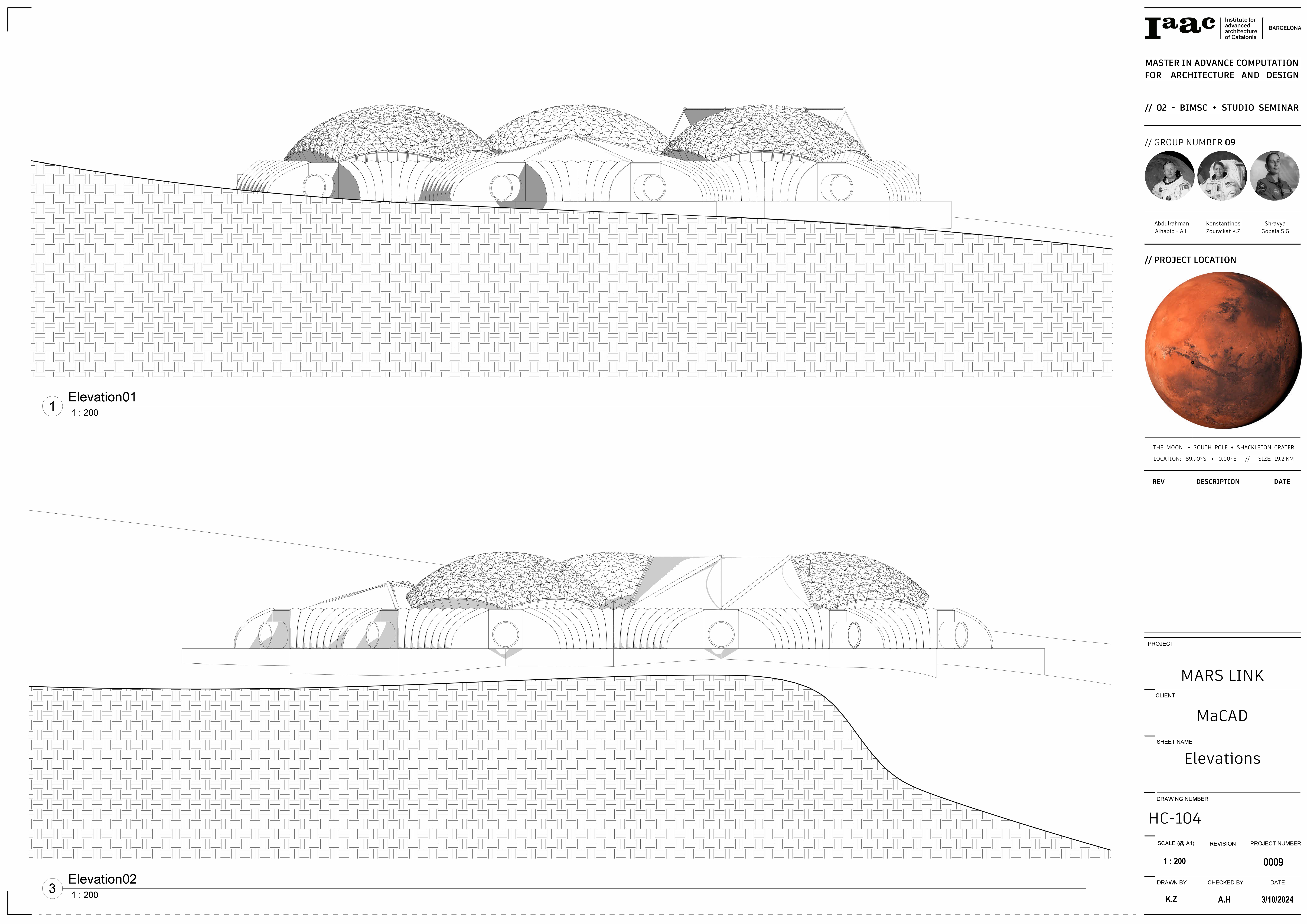
_COMPLEX ADAPTIVE FAMILIES I DOME
The inflatable domes serve as central gathering spaces within our Martian settlement, fostering community engagement and shared activities. We utilize advanced computational tools such as Kangaroo to simulate the inflation process, ensuring precise deployment. Custom Revit adaptive families are developed to seamlessly integrate these structures into our BIM workflow, enhancing design flexibility. Each inflatable panel is assigned an Individual ID for tracking purposes, facilitating smooth construction management. Leveraging Rhino.Inside, panels are grouped into installation categories to streamline assembly logistics. Structural triangular members are categorized by size and cross-section, simplifying fabrication processes and ensuring structural integrity. By organizing these elements into fabrication groups, production, and assembly are fully optimized.
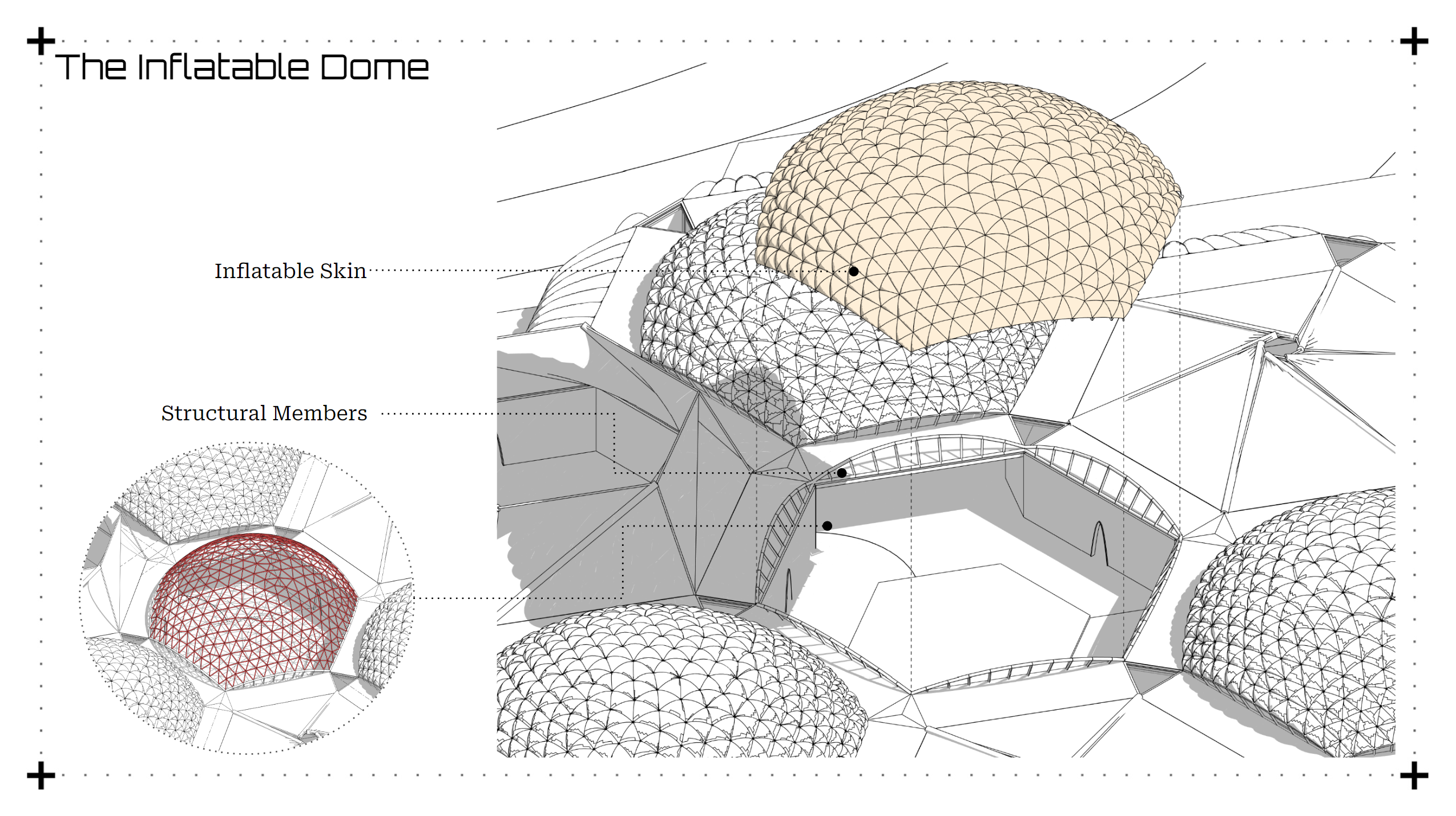



_Revit Adaptive Families
Using Rhino.Inside, we seamlessly integrate Rhino’s advanced modeling capabilities with Revit’s BIM environment from the early design phases, facilitating a more fluid and iterative design process. This integration empowers us to create parametric adaptive families within Revit, where we can finely tune the geometry, material properties, and behavior of the inflatable panels. Ultimately, the integration of Rhino.Inside with Revit enabled us to seamlessly transition between conceptual design and detailed modeling, while maintaining a high level of control and precision throughout the process.


DOCUMENTATION

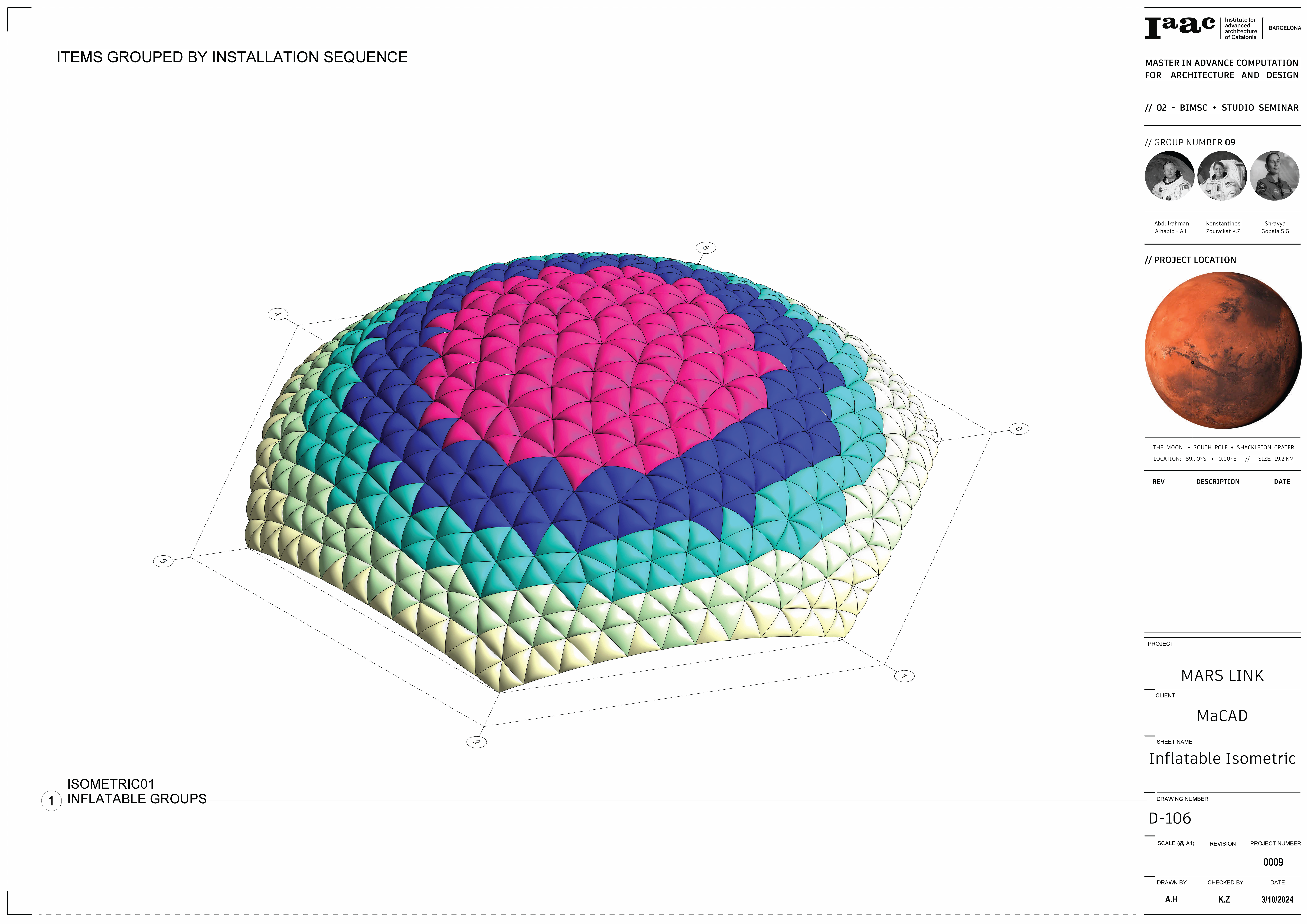
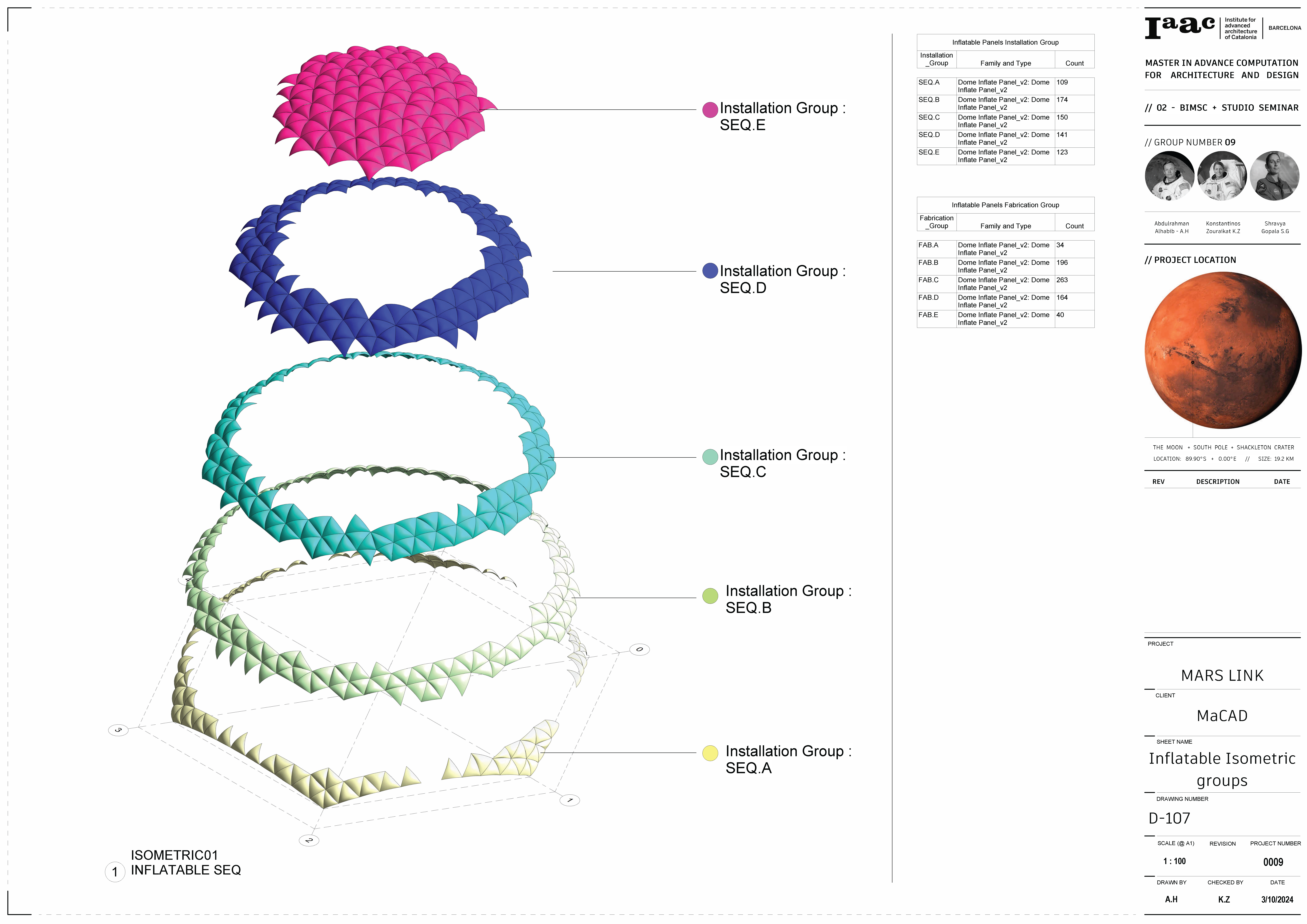
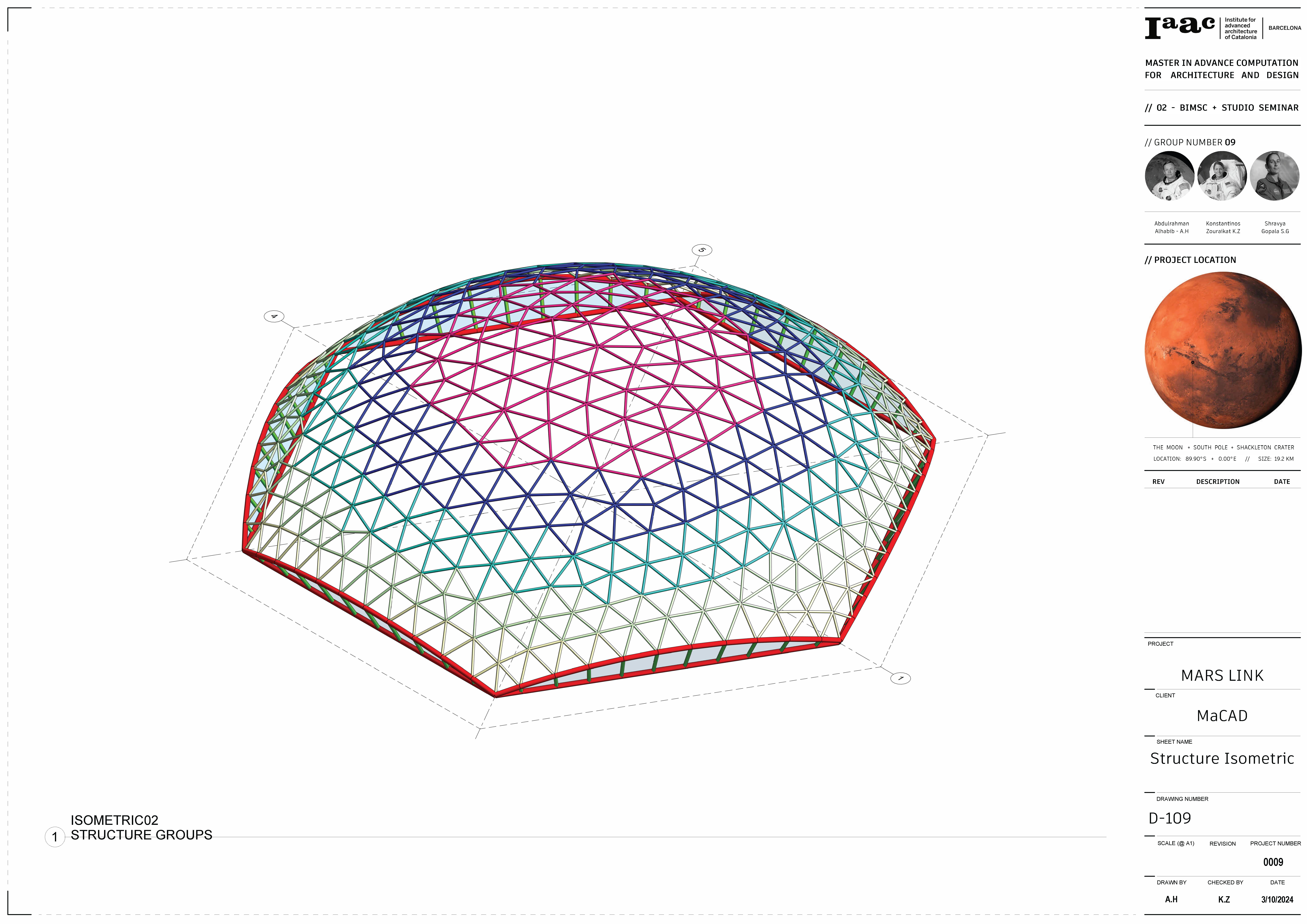

_Helipad Infrastructure
The launching helipad hexagon is comprised of a 3D printed base supported by a tensile structure, operating on the principle of Tensegrity to enable deployable structures through controlled cable length. Utilizing Kangaroo simulation, we simulate the opening and closing of the launch pad to create an airlock mechanism, ensuring the safety and integrity of the structure. The helipad is specifically designed to facilitate the smooth arrival and departure of capsules, featuring a membrane controlled by cables and struts. This results in a lightweight and flexible structure that can withstand external forces while remaining stable and resilient. Additionally, it is equipped with a safe landing pad and a designated radio control zone to ensure safe and efficient operations within the Martian environment.
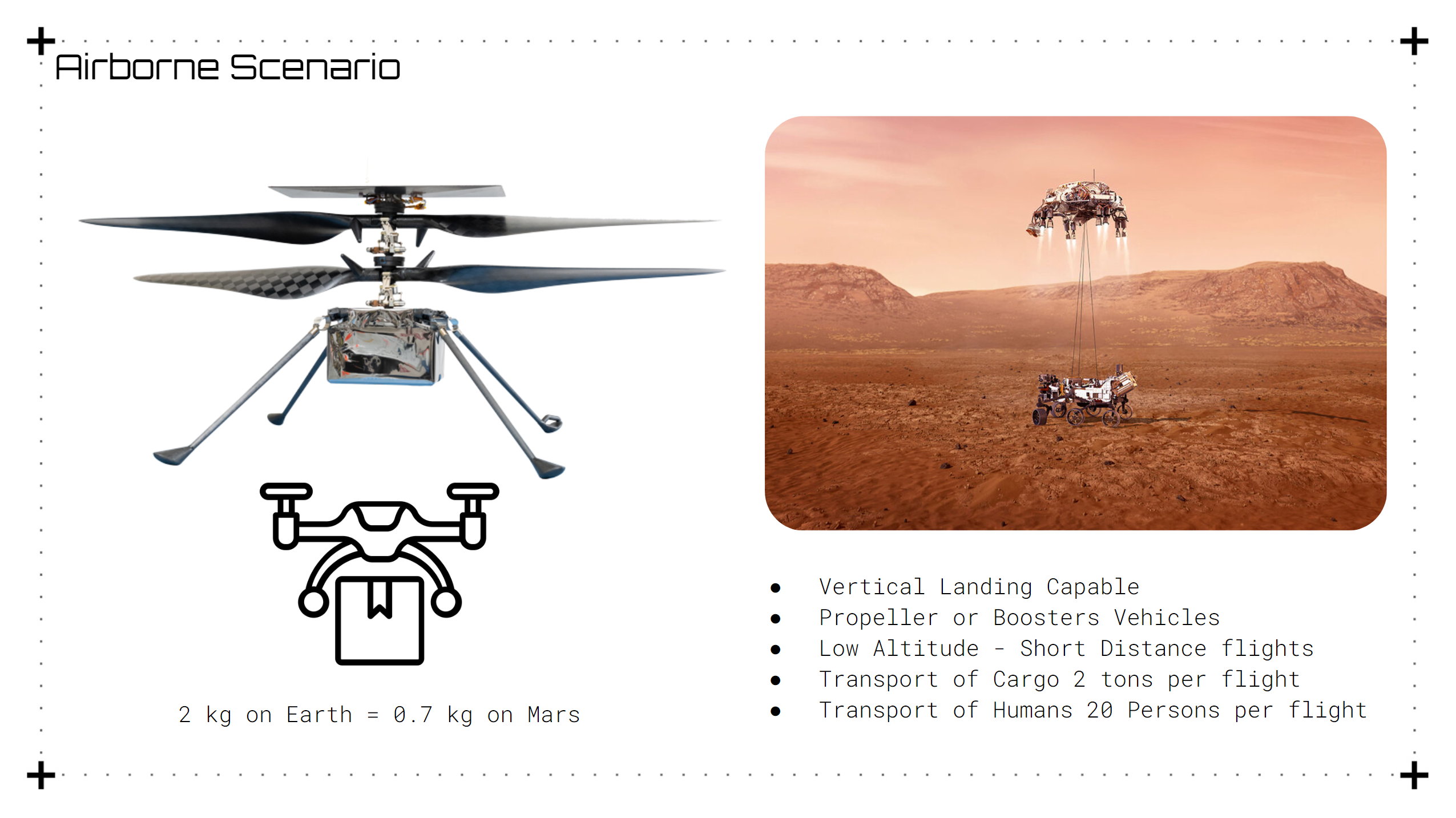


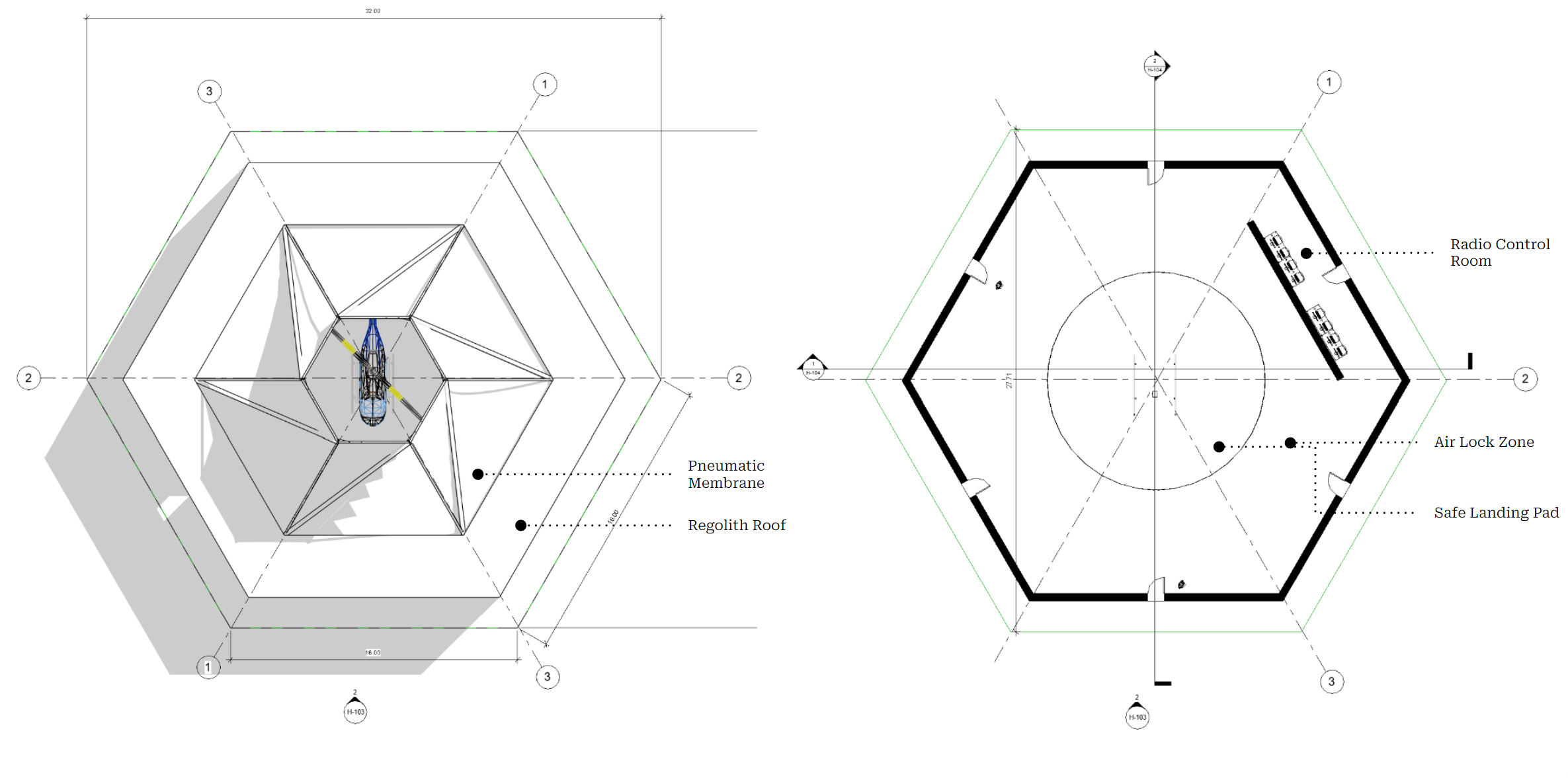
DOCUMENTATION
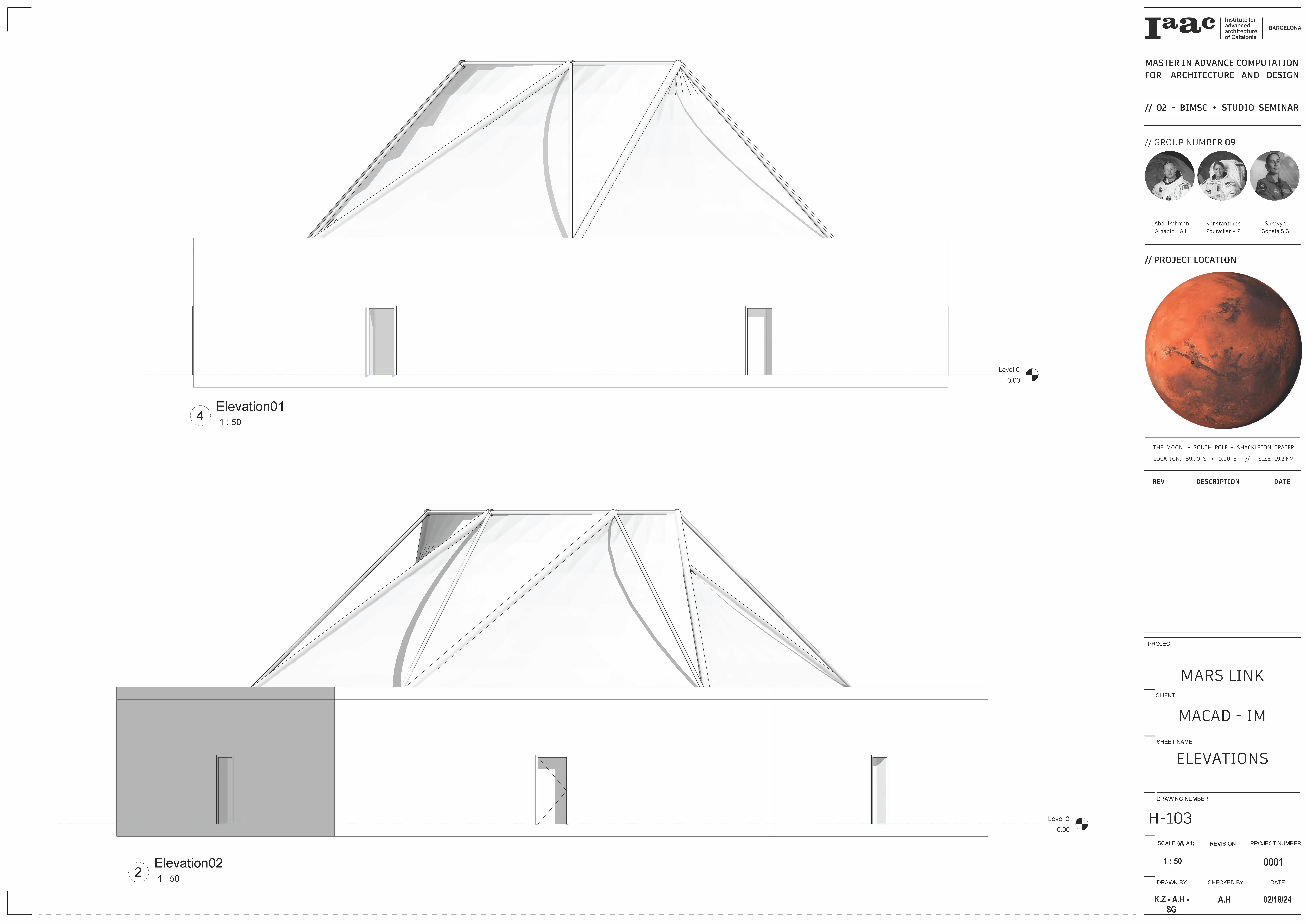
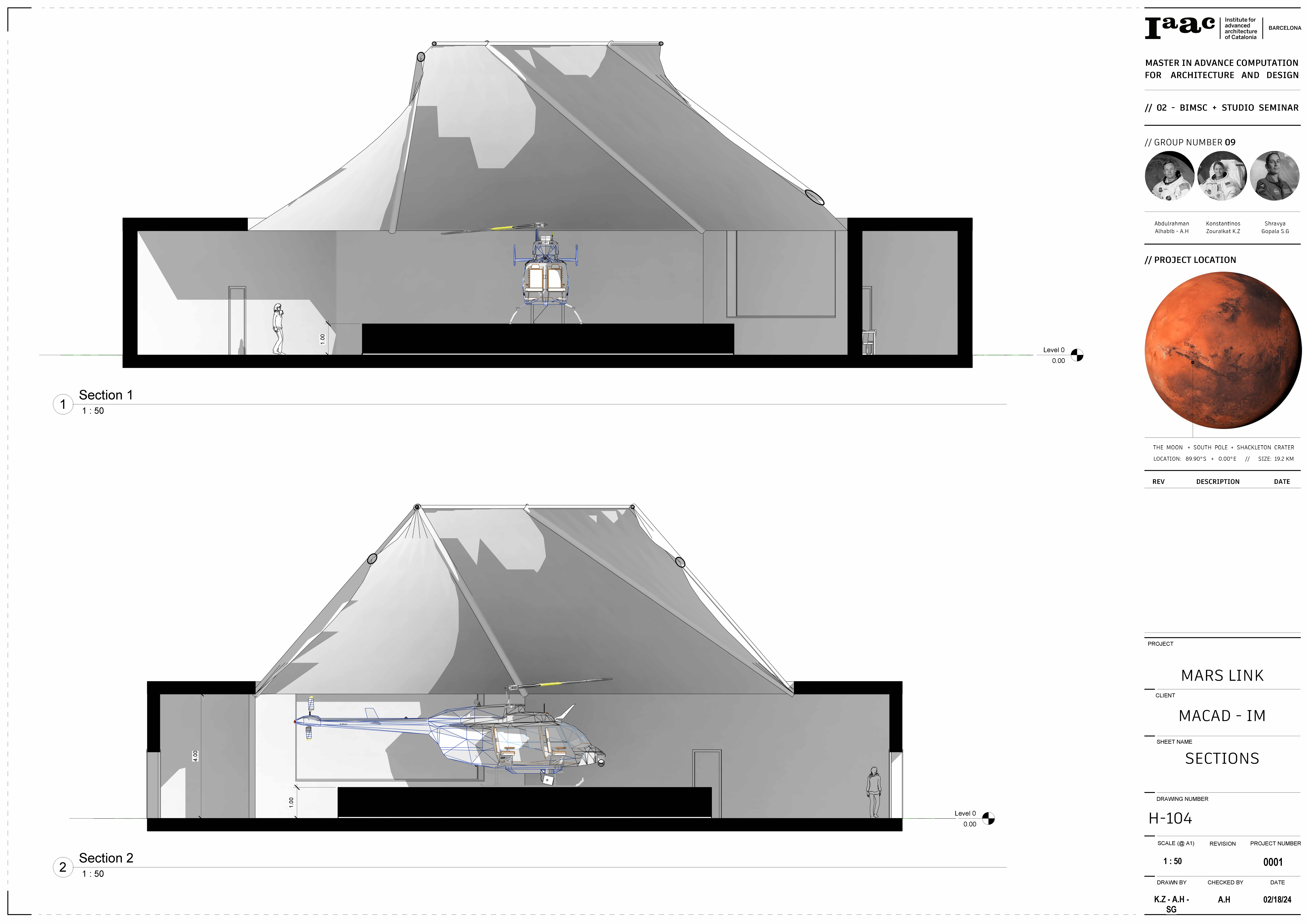
_Techniques – Rhino.Inside
- Aggregation
- Tensegrity Automation
- Revit Filters
- Shared Parameters
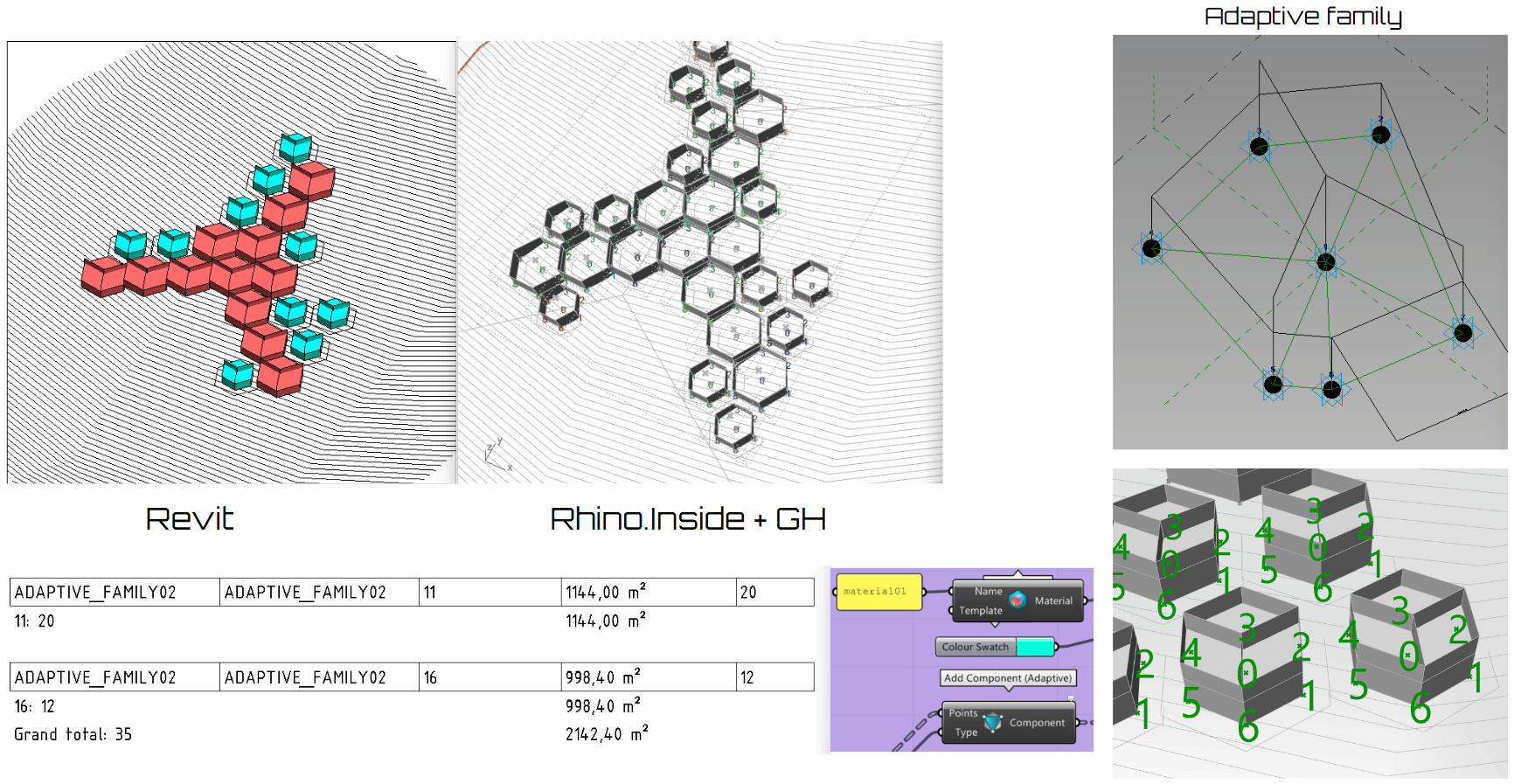
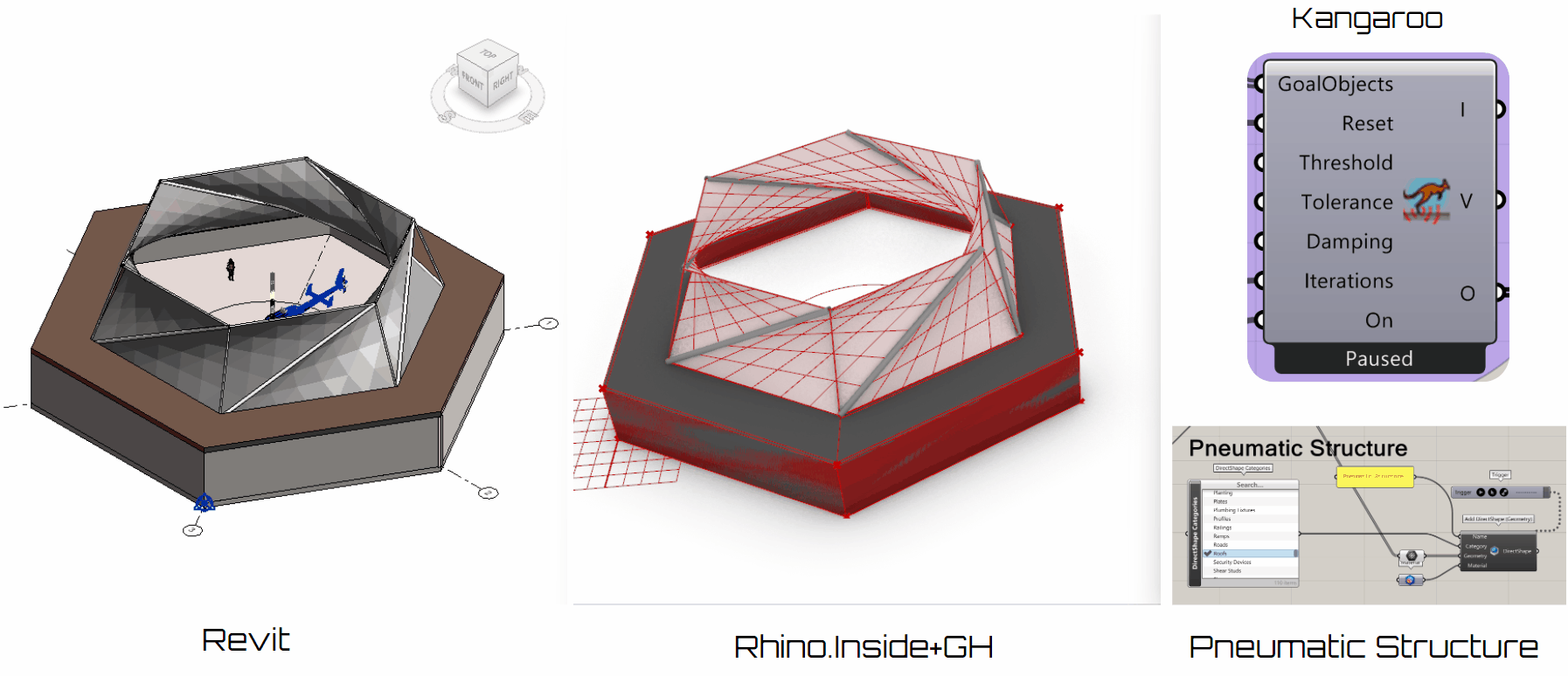

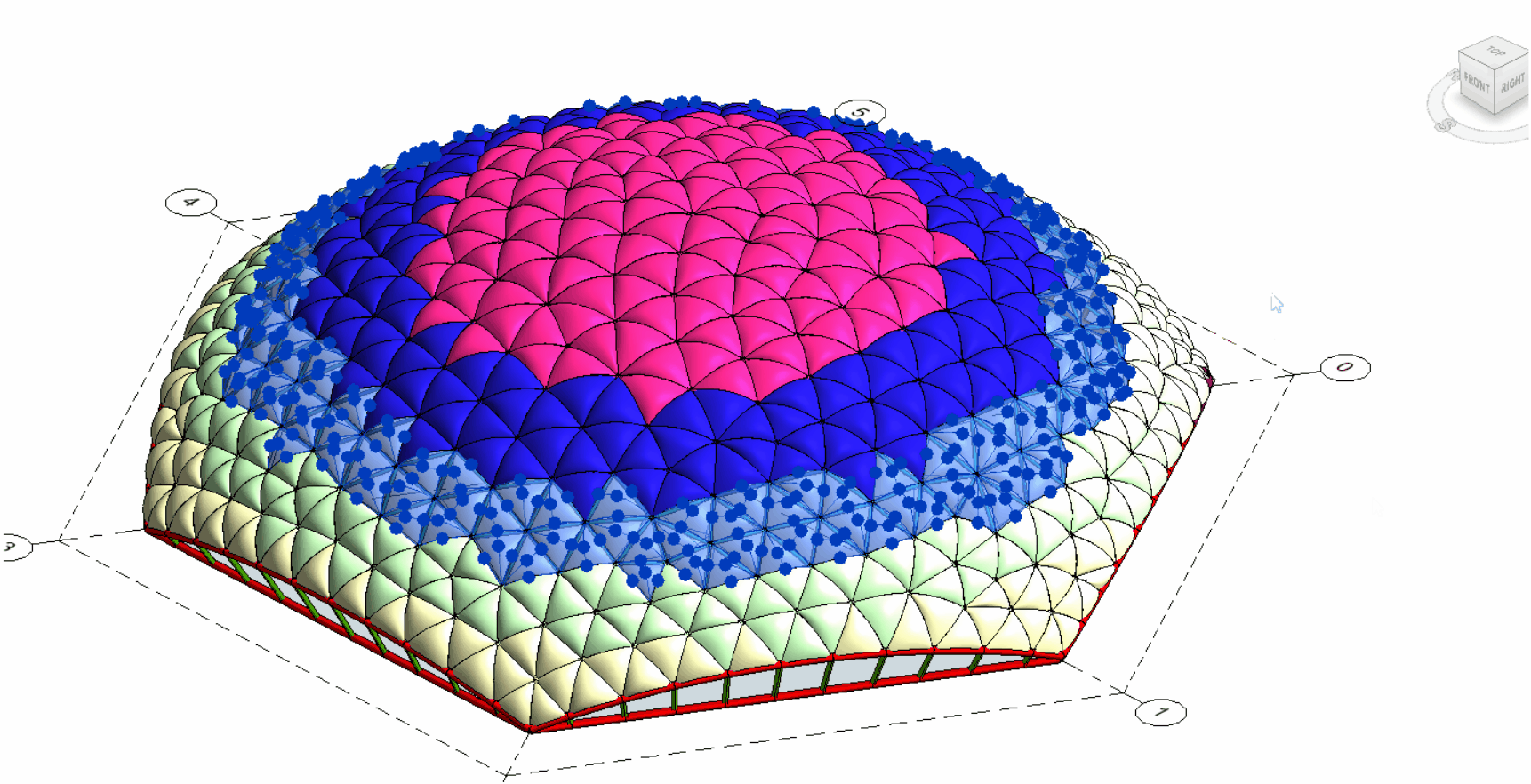

_Sheets


